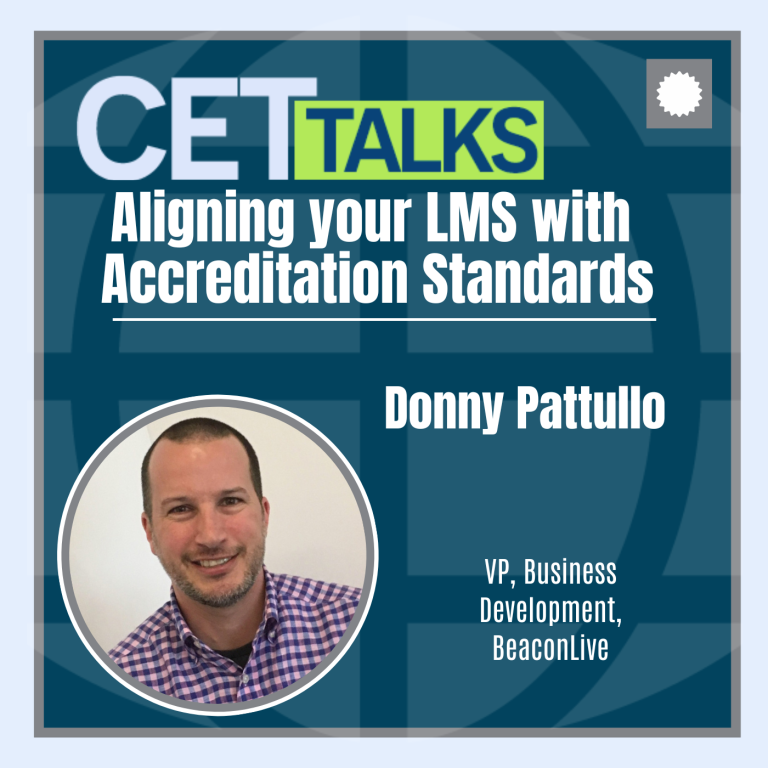Episode 18
.
CET Talks: Accreditation, Learning and Leadership
Episode 18
JUNE 25 2024 . 21 MINUTES

On the Inclusive Frontier: Harnessing Neurodivergence in Modern Training
As workplaces evolve, the integration of neurodiversity into training programs becomes increasingly crucial for tapping into a broader talent pool. Join Tracy King, Chief Learning Strategist & CEO of InspirEd, as she discusses the essential strategies for fostering an inclusive learning environment that caters to neurodivergent individuals. In this episode, Tracy will explore the intersection of learning science and technology, highlight best practices for inclusive training design, and share success stories that demonstrate the transformative impact of embracing neurodiversity in professional development. Tune in to learn how your organization can better support diverse learning needs and contribute to a more inclusive global workforce.
Listen to the Podcast

Welcome to CET Talks, the International Accreditors for Continuing Education and Training’s podcast, where we convene thought leaders in the continuing education and training ecosystem to share ideas, research, best practices, and experiences that promote the creation of a world that learns better. Your hosts are Randy Bowman, Interim President and CEO of IACET, and certified corporate wellness specialist Mike Veny.
As workplaces evolve, the integration of neurodiversity into training programs becomes increasingly crucial for tapping into a broader talent pool. Join Tracy King, Chief Learning Strategist & CEO of InspirEd, as she discusses the essential strategies for fostering an inclusive learning environment that caters to neurodivergent individuals. In this episode, Tracy will explore the intersection of learning science and technology, highlight best practices for inclusive training design, and share success stories that demonstrate the transformative impact of embracing neurodiversity in professional development. Tune in to learn how your organization can better support diverse learning needs and contribute to a more inclusive global workforce.

Transcription
Host: Welcome to CET talks, the International Accreditors for Continuing Education and Training’s podcast, where we convene thought leaders in the continue education and training ecosystem to share ideas, research best practices, and experiences that promote the creation of a world that learns better. Enjoy the episode.
Randy Bowman: Hello and welcome to CET talks. My name is Randy Bowman, and I’m here with my co-host, Mike Veny, a certified corporate wellness specialist, and CEO of an IACET accredited provider. How are you doing today, Mike?
Mike Veny: Good. Hi, and hello to our listeners out there. Randy, it’s great to be on the show with you. I don’t know if you’ve heard about this topic of neurodivergence that’s become more popular and how it’s applying to learning. Have you heard anything about this?
Randy Bowman: You know, I’ve heard about how different people learn different ways, so I certainly am eager to learn more.
Mike Veny: We’re going to get to learn more today. We have a very special guest on our show. Their name is Tracy King, and Tracy is the chief learning strategist and CEO of InspirEd with more than 20 years in workforce development consulting with organizations on educational strategy and learning design. They’re the author of the book Competitive Advantage, which I read years ago, and it helped me a lot. They are a thought leader, master learning designer, trainer, facilitator, coach, and an ASAE DELP scholar featured on NBC, ABC, Fox, USA today, Forbes, and hundreds of national television newspaper and magazine outlets. Tracy, welcome to our show.
Tracy King: Oh, thank you so much for inviting me. I’m so excited to visit with you today.
Randy Bowman: Tracy, we’re excited that you’re here to kick us off and get us started. Can you help our listeners who may not be familiar with what neurodiversity is? Can you explain what it is and why it’s crucial for training programs to accommodate neurodiverse learners?
Tracy King: Yes, I love that question. Thank you so much. The thing is, if you know five people, you know someone who’s neurodivergent, which means if you have five people in an education program, neurodiverse folks are part of your learning community. So what is neurodiversity? Well, we as a species are inherently diverse and this biodiversity, which extends to all the variety of life on earth, is necessary. It improves stability and resilience in our ecosystems. It improves creativity and decision-making in our societies. It’s part of our evolution as a species. The term neurodiversity points out that brains and nervous systems are not one size fits all, either. There is variety and that’s natural, it’s expected, and we all together comprise neurodiversity. People who are neurodivergent, then, fall into that brain and nervous system variant category. We have distinct ways of thinking, learning, and relating, and as you can imagine, the neurodivergent umbrella is also diverse itself. Many people will often think first of autism, ADHD, learning challenges like dyslexia, and these are inherited neurotypes. But the umbrella also includes things like bipolar BPD, epilepsy, OCD, Tourette’s, C-P-T-S-D, among other issues. Some forms of neurodivergence are inherited, while others may be developed through traumatic brain injuries or even complex trauma. It’s important to note when we’re talking about neurodiversity, which is all of us and neurodivergent folks, which are those with these brain and nervous system variations, that variation in and of itself is not a disease state. It’s not disordered. It’s different than the majority, kind of like red hair and freckles or left-handedness. We wouldn’t consider these variants to be disordered because they’re different from the majority. So returning to your question, why is it crucial to think about neurodiversity, to accommodate neurodiverse learners? It’s because we’re in every classroom room and for any piece of training to be effective, inclusion and belonging are required.
Mike Veny: Thank you for that wonderful definition and thank you for clarifying that it’s not a disease state. As someone who is on the neurodivergent spectrum, I appreciate that. On a personal level, we often hear leaders express their hesitation or even frustration on this topic, usually along the lines of, “Well, we didn’t have all of this when I was in school,” or, “It’s going to cost a lot of money.” For the skeptic who’s listening right now, why is this such an important topic, and what opportunities and/or benefits are there for organizations that address this particular need?
Tracy King: Well, let’s first talk about why it seems to be exploding, why it looks like it’s more widespread than it has been. The fact is, we can confidently say that neurodivergence has always existed, but with each new addition of the DSM, the criteria for neurodivergence expands and it includes more people. The original criteria was very limiting. It was based on research of white, affluent male children. Just as an example, women were excluded from ADHD studies until the late 1990s. Women and AFAB, estrogen-based folks present autism and ADHD differently than males. This is still not adequately accounted for in the DSM criteria. As it is, you can expect that there will be more and more women or AFAB folks who are identified as neurodivergent. Also, it’s important to note that the diagnostic criteria, if you take a look at it, describes neurodivergent folk as deviating from the norm. We’ll just put a pin in the fact that normal is a construct, normal is a myth. The very fact that the criteria basically describe how neurodivergent people inconvenience systems, norms, institutions, and expectations versus reflecting our own internal experience means that these criteria and the diagnostic tools related to them are deeply flawed. Pair that with the fact that assessment is not accessible. We can chat about that as well, but more and more people are self-realizing by connecting with each other, with the research, with coaches and authors, online sharing stories, sharing assessments that are free, available, and accessible with each other. The evidence actually suggests that the increase in the number of people that are neurodivergent is a result of professionals and the public being more aware of what this is and what it actually looks like as a lived experience. But other than neuro divergent people existing, why is this important? Well, one of the reasons why is if we think about our emerging leaders, if we think about our young professionals entering the workforce, Generation Z. These folks grew up under the ADA, they grew up with the Disability Education Act, right? They are sophisticated advocates for their needs. 50% of Generation Z identify with a form of neurodivergence. They have an extraordinary sense of justice. They will not shy away from the fact that DEIAB is an expectation. It’s not a request, and it’s really not something that, if we ignore it, it’ll go unnoticed. It’s increasingly important because it’s important to the people who are in our workplaces and who are in our continuing education classrooms.
Randy Bowman: We often hear about organizations talking about universal design as a solution that creates a more inclusive programming for all learners, but we also see that these programs are often falling flat. Why do you think that is?
Tracy King: Well, there can be a lot of different things going on, but I think one really critical component of that is that universal design for learning (UDL) is not a checklist. It’s not a to-do list that makes learning automatically more accessible or inclusive; it’s a set of practices that may apply, but we still have to do the work of knowing our audience and their needs. We still have to implement the best practices of instructional design for adult learners in order to facilitate transformation. So I wouldn’t throw it away. The reasons why I like universal design for learning is because it’s rooted in the cognitive science of learning, and it’s also rooted in the social model of disability. The medical model of disability points to the individual and says, you are disabled individual. You are disordered. You are not like us. But the social model of disability holds systems, institutions, and environments responsible as a society, for disabling people because they’re inherently different. Because we have designed these spaces to exclude them, societies disable people. That’s the foundation of the social model of disability, which means that classrooms and learning structures are not designed to be inclusive disable people. The burden is on us as learning providers to remove those barriers to learning. That’s what UDL says to us. Just offering accommodations upon request, really, if I’m being honest, and this might be a hot take, says that we tolerate learners who are different from us versus we’re offering inclusive spaces. Accommodations should be treated as a bridge, in my opinion, that as we’re building more and more inclusive learning with intention, as we’re investing, because it is an investment, to change systems, to change environments, to provide diverse ways of accessing content. Accommodations is a stopgap versus a solution. I encourage people to embrace the fact that universal design in learning really seeks to design from the perspective of removing barriers and listening to our learners about their experience and iterating. It’s not a final end state of “this is a perfected inclusive piece of training,” right? We in professional development are in a time when we have to create our own use cases because UDL has mostly been applied to K12 and higher education. Our context is a little bit different in adult learning for workforce development, continuing education, professional development, but it’s time that we really dig into that conversation and have it.
Randy Bowman: Do we ever have situations where removing an obstacle for one type of learner introduces an obstacle for another learner? If so, how do we manage that tension between these two diverse learners with diverse needs?
Tracy King: Yeah, of course that is something that can happen. But what the research is showing is that creating multiple ways of accessing content and relaying one’s proficiency or expertise actually benefits everyone. Even if someone’s not neurodivergent, they can still benefit from, for example, the accommodation of extra time for an exam. They can still benefit from having multiple ways to access content. This week, do they want to read it? Do they want to listen to it? Do they want a reader to read it to them? These ways of designing learning to be inclusive actually offer more choice and autonomy to learners. It teaches learners how to understand their best processes for approaching the time that they have to acquire the expertise that they’re required to master. So making things more inclusive actually benefits everyone. Could a barrier be raised because we didn’t understand a need in our group of learners? Absolutely. That could happen, and that’s why this is an iterative process, but really the research is bearing out that it benefits most learners when we seek to be inclusive.
Mike Veny: I appreciate you saying that too, because it made me think lately when watching learning videos, sometimes closed captioning is on. For me, when I first saw it on a video, it was annoying. Now I’ve been seeing it more and more, and I’ve started to rely on it sometimes. That’s an example of something that Randy said, might’ve been perceived as a barrier by me. It’s like, why do I need this here? Actually, it’s helped me in the long run, and now I look forward to it. I have to make sure it’s on now when I watch my videos. That being said, how does InspirED address the challenges and opportunities of training neurodivergent learners? Could you share a success story where your strategies have effectively transformed an organization’s approach to neurodiversity?
Tracy King: Yeah, let’s talk about that first. I do want to address the captioning. At this day and age, every piece of media should be captioned. There’s really no excuse to not include captioning on visual media. Every still photo should have alt text. It should just be common practice at this point. More often than not, captioning players allow us to turn it off and on. Also, something that’s important to remember about neurodivergence is that it’s not static. I’m ADHD, and so when I’m trying to focus on processing a piece of content, there are different weeks when I have different support needs. It’s not a static experience. Some weeks I rely on those captions in order to be able to access media. In other weeks, like Mike said, maybe they’re annoying. It’s like, get rid of them. I don’t need that right now. Right? But whenever we offer that, it’s not just for hearing impaired folks; it’s to offer a variety of ways for people to access the content without having to say, “Look, I have additional needs.” When it’s the media that is the disabling piece, right? And so, just mentioning the fact that neurodivergence is not static, that we have differing support needs from day to day, from hour to hour, from week to week, that captions is really a vital piece. It should always be included. But as far as InspirED, inclusive learning design has always been a cornerstone for me, for us. We challenge our clients to be more inclusive, to think through access barriers to ensure accessibility of the training that we design. I’m at a stage in my business, we’re having our 10-year anniversary, where I really want to be bolder about this. While we do value diversity inclusion as a team, and it informs all of the work that we already do, my goal is to really make this more explicit to our clients and to our association community. So, while we’ve developed training that is accessible and does represent the diversity of the learners that it’s provided for, right now what I’m doing is developing tools and learning for just addressing the needs of neurodivergent learners for in-person virtual and online learning. It’s going to include more of what we’ve been talking about; the background on neurodivergence, what it is, appropriate tech terminology, a review of the differences that we need to design for. I want to create resources around accommodations for workforce development, as that temporary stop gap that we’ve already talked about, while we’re designing inclusive learning. I want to create tools for neurodivergent adult learners that really helps them advocate for their needs and get the most out of the professional development that is available to them. This is a full circle thing in professional development, as adults are really held largely responsible for mastering the training. Most of the training we offer is informational versus full-cycle learning. That can be an extraordinary barrier, an extraordinary challenge for neurodivergent folks, but there are definitely tools and strategies that can be applied. I’m taking what we do on a day-to-day basis and really wanting to blow it out to create resources that help advance the conversation.
Randy Bowman: It sounds like you have a vision of what you would like to see. You’ve kind of answered this, but can you encapsulate for me, what does a world that learns better look like to you?
Tracy King: I would have to say that a world that learns better is a world that creates belonging. Belonging is co-created. It means we stop asking learners to be normal like us or perpetuate flawed approaches because it’s the way it’s been done or shrink away from conversations and changes that will be challenging. Belonging has to be co-created because we, together, co-create inclusive spaces where everyone can become the highest versions of themselves. That’s the goal, that’s the vision. That’s the world I want to learn in.
Mike Veny: Well, Tracy, thank you so much for such a powerful interview. I wish we could just keep going and there are so many more things I want to ask you. And Randy, I wanted to tell you about one of my many takeaways. I’m over here taking lots and lots of notes, but one that I think is important for the listeners out there to understand, is that neurodiversity or neurodivergence is not a disease state. We’re all different. I think that’s really important as we try to create a more human-centered world. What about you, Randy?
Randy Bowman: I’m right there with you, Mike. You know, I don’t know of any two people who think exactly the same. To a certain degree, everybody is neurodivergent. I especially loved what Tracy said, that neurodivergence is not static. There might be different needs on different days. I think if that’s our takeaway, that even neurotypical people have tough days where they may need something different, if we do approach with that learner-centric, that human-centric that, hey, this is a person view, I think we can help create that world that learns better. Thank you so much, Tracy, for being with us today. As we wrap up today’s very important discussion on neurodivergency, we would love to hear from you. Join us on our LinkedIn page and answer this question – what questions do you have about neurodiversity and training or experiences that you’d like to share? We would love to continue this discussion. Reach out to us on our social media using the hashtag CET talks, neurodiversity, and share your experiences with us. Your stories can provide invaluable lessons and inspiration to others who are navigating these very similar paths. Also, don’t forget, you can submit topic ideas, suggestions for guests, and other feedback on the CET Talks podcast page of the iacet.org website. We certainly hope you’ll subscribe to this podcast on your favorite podcast platform, so you don’t miss any of these exciting episodes. Thank you so much for joining us today.
Host: You’ve been listening to CET talks, the official podcast of IACET. Don’t forget to subscribe to the podcast on Spotify, Apple podcasts, or wherever you listen to podcasts. To learn more about IACET visit iacet.org. That’s I-A-C-E-T.org. Thanks for listening, and we’ll be back soon with a new episode.
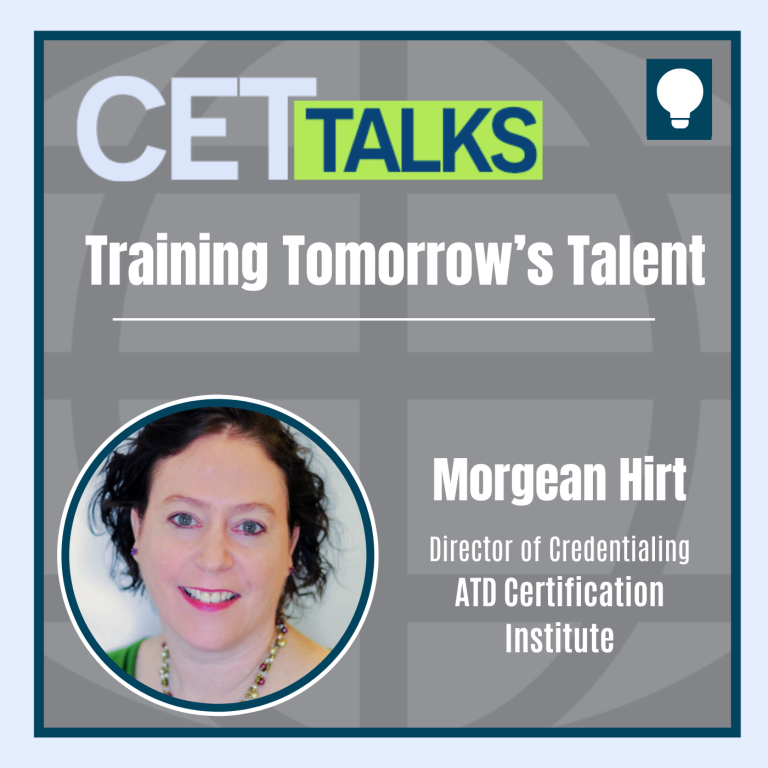
Episode 31: Training Tomorrow’s Talent: Exploring Certification, Standards, and Impact with ATD’s Certification Institute
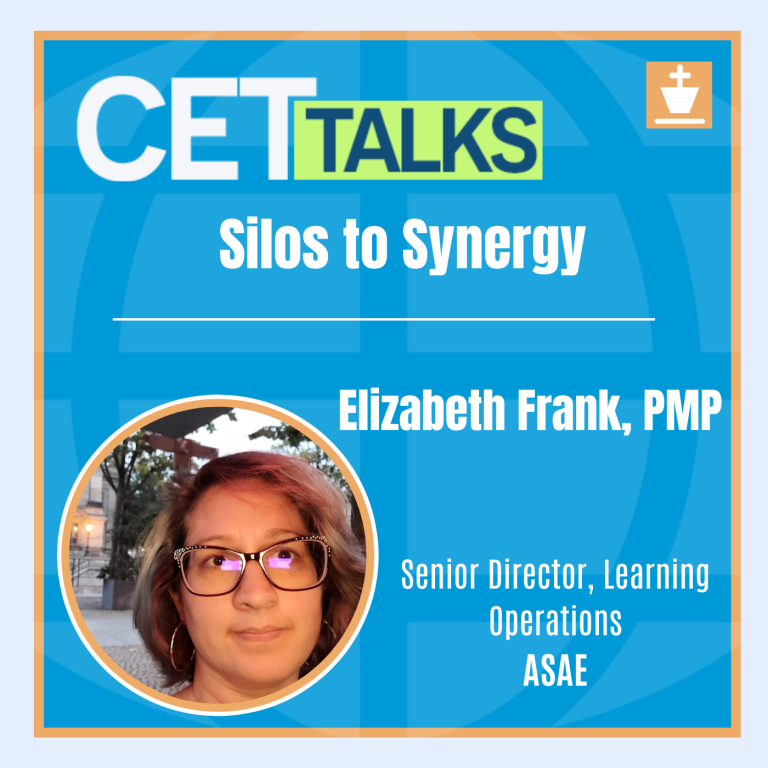
Episode 30: Silos to Synergy: Holistic Approaches to Creating Collaborative Learning

Episode 29: Credentials in Crisis: Challenges and Opportunities in Modern Education Recognition
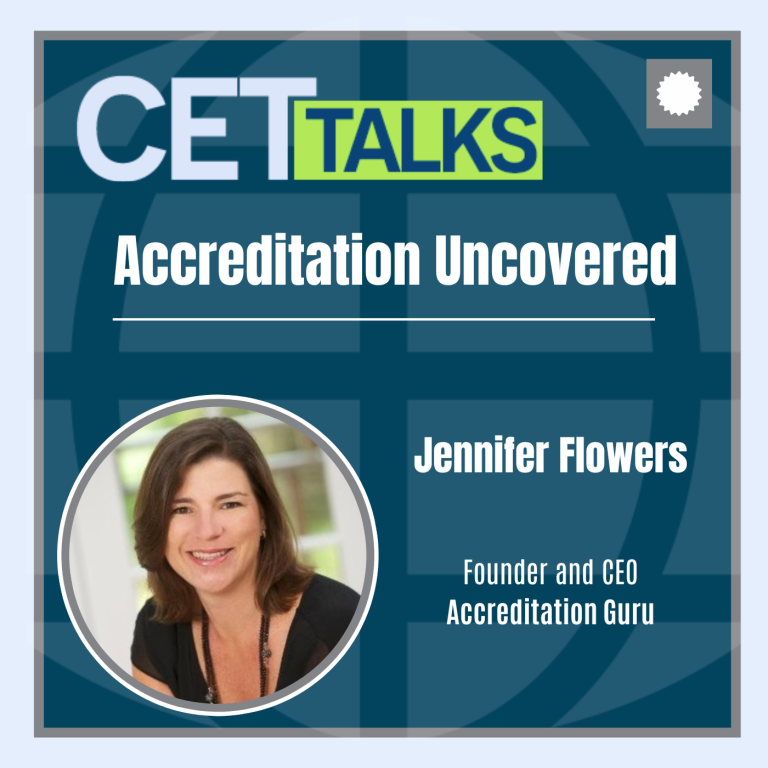
Episode 28: Accreditation Uncovered: Essential Insights from an Industry Leader

Episode 27: Two Truths with a Lie: Managing the Myths of Modern-Day Learning
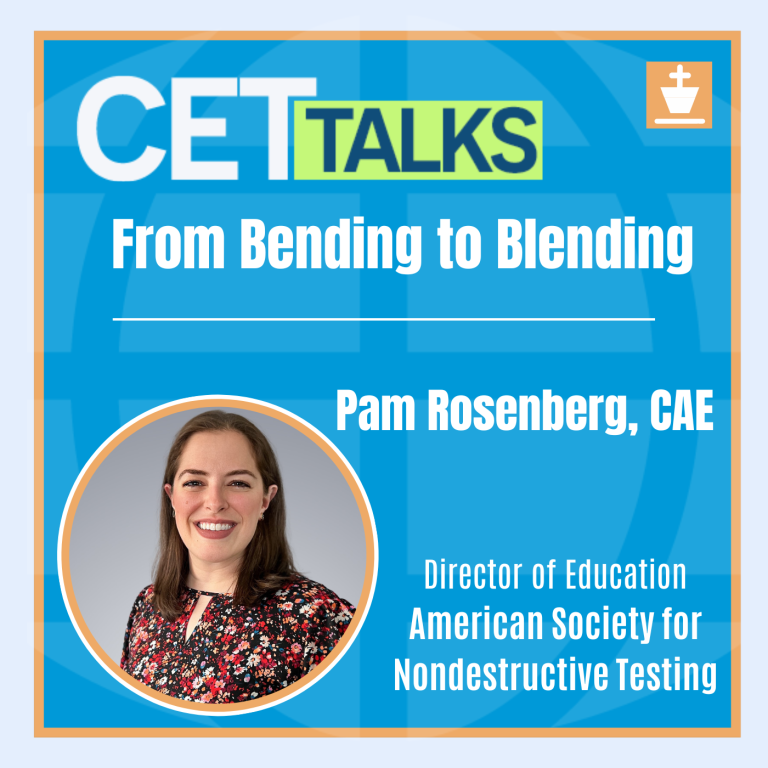
Episode 26: From Bending to Blending: Best Practices in Integrating Externally-Created Content
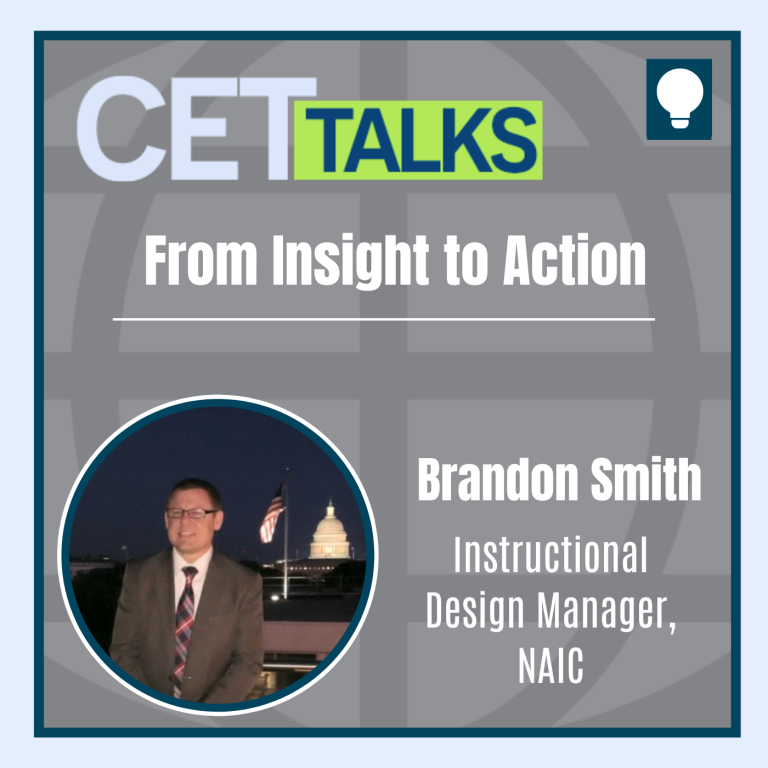
Episode 25: From Insight to Action: Charting the Career Path of a SME-turned-ISD

Episode 24: Cultivating Careers: The Power of Employee Engagement for Organizational Success
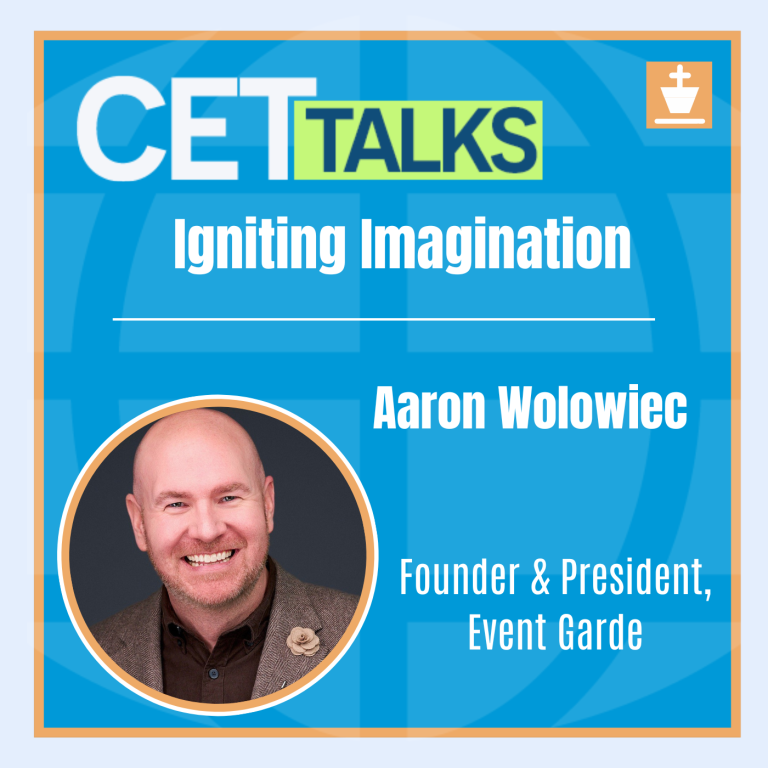
Episode 23: Igniting Imagination: Crafting Creativity in Training Environments
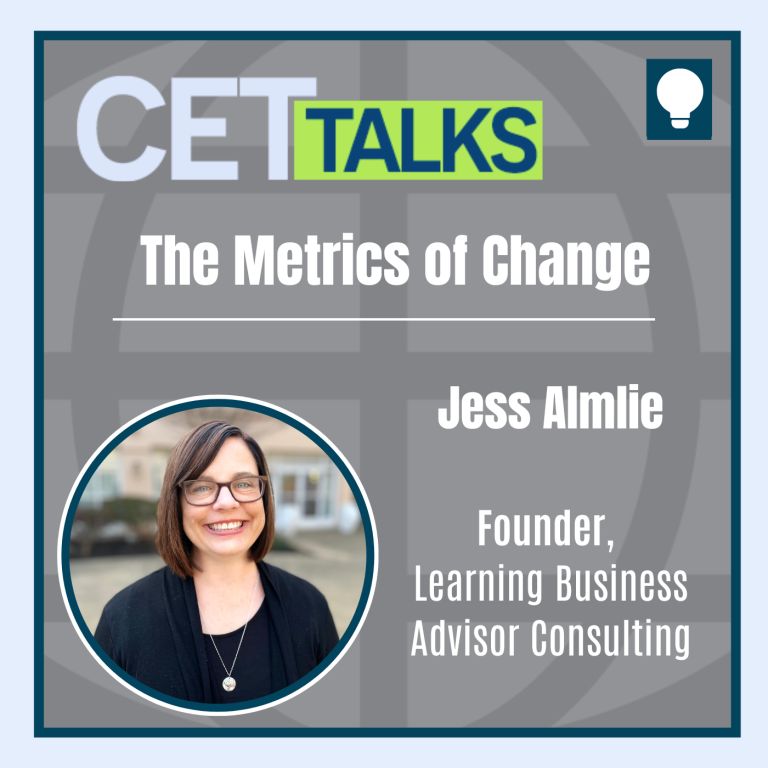
Episode 22: The Metrics of Change: Navigating Purposeful Measurement in L&D
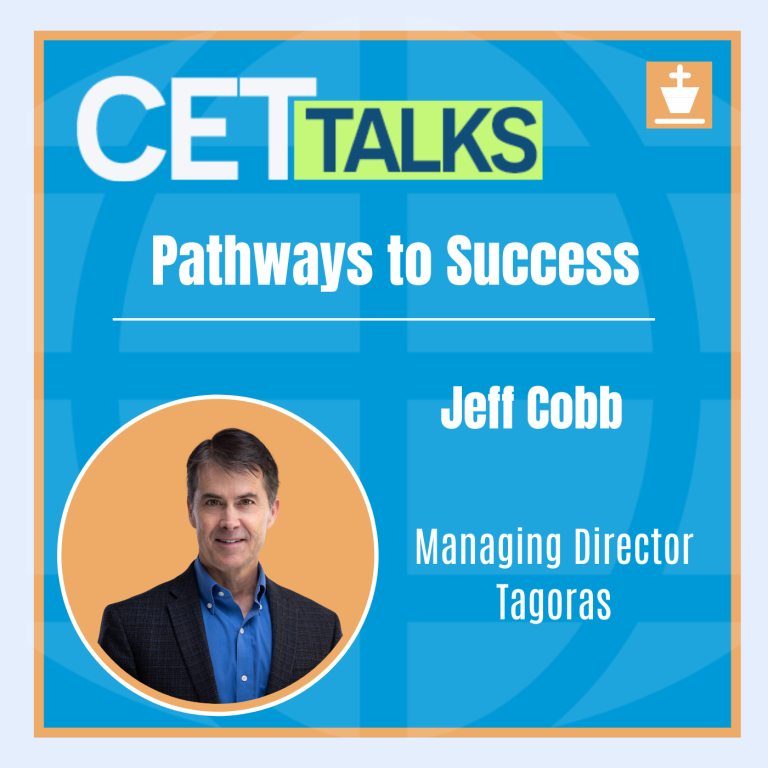
Episode 21: Pathways to Success: The Value of Lifelong Learning through Digital Credentials
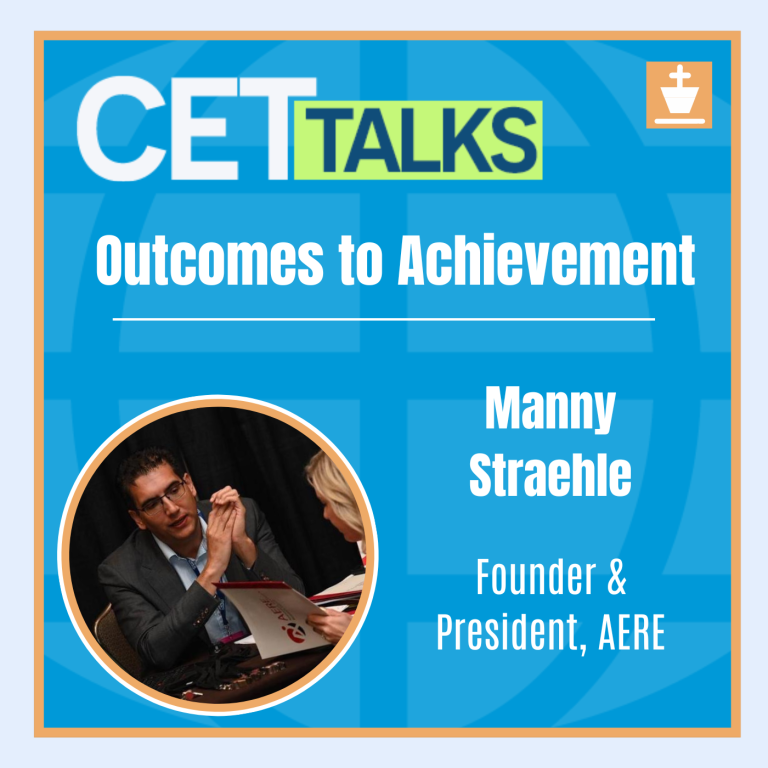
Episode 20: Outcomes to Achievement: Crafting Tomorrow’s Workforce Through Competency Models

Episode 19: Chatting with the Future: Enhancing AI Output Through Prompt Engineering

Episode 18: On the Inclusive Frontier: Harnessing Neurodivergence in Modern Training

Episode 17: Designing with Purpose: Strategies for Accessible e-Learning Development
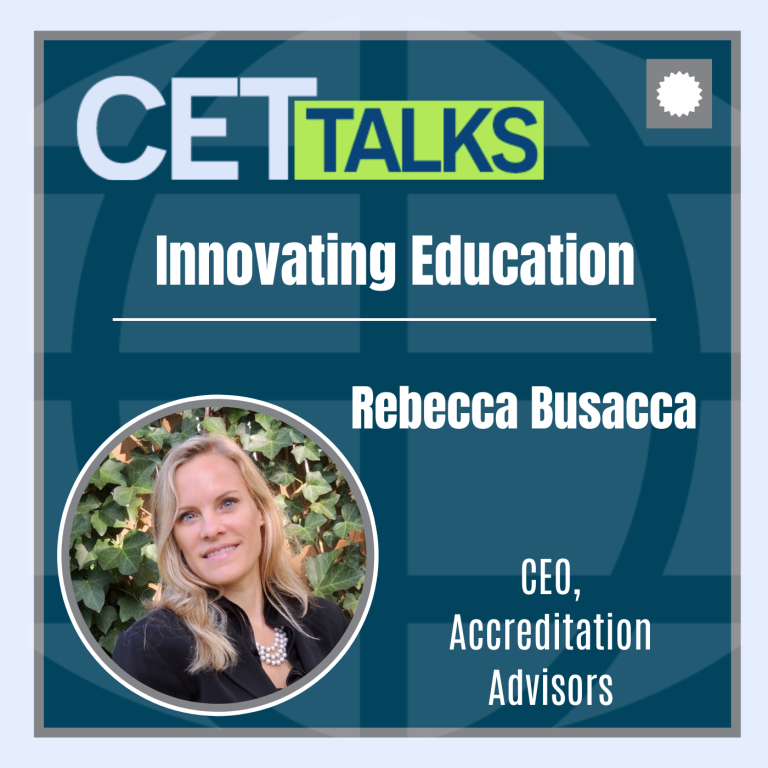
Episode 16: Innovating Education: Navigating Accreditation for Short-Term Training
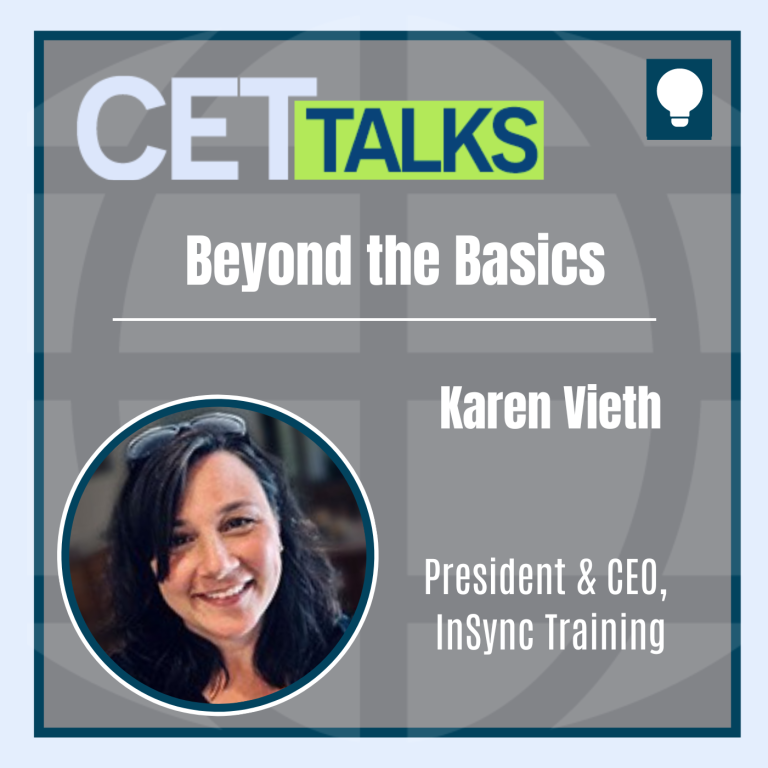
Episode 15: Beyond the Basics: Elevating Virtual Training through Expert Facilitation
